




Related bibliographies:
Reptiles
 Lizards Lizards
 Asaccus Asaccus
 Gymnodactylus Gymnodactylus
 Haemodracon Haemodracon
 Homonota Homonota
 Phyllodactylus Phyllodactylus
 Phyllopezus Phyllopezus
 Ptyodactylus Ptyodactylus
 Tarentola Tarentola
 Thecadactylus Thecadactylus
Africa
Central America
Europe
Middle East
North America
South America
West Indies
Atlantic Ocean
Indian Ocean
Mediterranean Sea






































































































































































































































































































































| |

Bibliography of the family
Phyllodactylidae (Leaf-toed Geckos)

(Reptilia: Sauria)
Note:
In order to limit redundancy, relevant literature indexed in the related bibliographies in the left column may not have been included in this page. For a comprehensive search of literature, these bibliographies should therefore also be consulted.
 |
Anonymous. 1980. Marine observers' log. Lizard. Marine Observer 50(270): 174-175.
Anonymous. 2002. Gecko fact finder. Chit Chat (Newsletter of the GGA) (9): 9-12.
Allen, R. 1994. The captive management and breeding of geckos. Rephiberary 199: 2-4.
Ananjeva, N.B. 1982. [The protective function of caudal glands in geckos]. (In Russian). Priroda (Moscow) 1982(6): 112-113.
Anderson, S.C. 1972. Adaptations in geckos. Pacific Discovery 25(1): 1-11.
Arnold, E.N. 1996. The role of biological process in phylogenetics with examples from the study of lizards. Memorie della Societa Italiana di Scienze Naturali e del Museo Civico di Storia Naturale di Milano 27(1): 9-20.
Audy, J.R. 1953. Strolling on the ceiling. Malayan Nature Journal 7: 182-190.
Autumn, K.; Jindrich, D.; DeNardo, D.; Mueller, R. 1999. Locomotor performance at low temperature and the evolution of nocturnality in geckos. Evolution 53(2): 580-599.
Barts, M.; Hulbert, F. 2004. Die Geckos der Welt. Draco 5(2) (18): 4-17.
Bauer, A.M. 1990. Gekkonid lizards as prey of invertebrates and predators of vertebrates. Herpetological Review 21(4): 83-87.
Bauer, A.M. 1990. Phylogeny and biogeography of the geckos of southern Africa and the islands of the western Indian Ocean: a preliminary analysis. pp. 275-284. In: Peters, G. & Hütterer, R. (eds.). Vertebrates in the Tropics. Proceedings of the International Symposium on Vertebrate Biogeography and Systematics in the Tropics, Bonn, June 5-8, 1989. Alexander Koenig Zoological Research Institute and Zoological Museum, Bonn. 424 pp.
Bauer, A.M. 2009. Geckos in traditional medicine: forensic implications. Applied Herpetology 6(1) (Special Issue): 81-96.
Bauer, A.M. 2013. Geckos - The Animal Answer Guide. Johns Hopkins University Press, Baltimore. 159 pp.
Bauer, A.M.; Russell, A.P. 1989. Supraorbital ossifications in geckos (Reptilia: Gekkonidae). Canadian Journal of Zoology 67(3): 678-684.
Bauer, A.M.; Russell, A.P. 1991. Pedal specialisations in dune-dwelling geckos. Journal of Arid Environments 20(1): 43-62.
Bauer, A.M.; Russell, A.P. 1992. Regional integumentary loss as an escape strategy in island gekkonid lizards. pp. 69-71. In: Korsos, Z. & Kiss, I. (eds.). Proceedings of the 6th Ordinary General Meeting of the Societas Europaea Herpetologica, 19-23 August 1991, Budapest, Hungary. Hungarian Natural History Museum, Budapest. 531 pp.
Bauer, A.M.; Russell, A.P. 1992. The evolutionary significance of regional integumentary loss in island geckos: a complement to caudal autotomy. Ethology Ecology & Evolution 4(4): 343-358.
Bauer, A.M.; Russell, A.P. 1994. Is autotomy frequency reduced in geckos with "actively functional" tails? Herpetological Natural History 2(2): 1-15.
Bellairs, A.A. 1948. The eyelids and spectacle in geckos. Proceedings of the Zoological Society of London 118: 420-426.
Boulenger, G.A. 1885. Catalogue of the lizards in the British Museum (Natural History). Vol. 1. Geckonidae, Eublepharidae, Uroplatidae, Pygopodidae, Agamidae. British Museum (Natural History), London. 436 pp. (Reprinted in 1965 by Wheldon & Wesley, Codicote, and Cramer, Weinheim).
Brygoo, E.R. 1991. Les types de gekkonides (reptiles, sauriens) du Museum national d'Histoire naturelle. Catalogue critique. Bulletin du Museum National d'Histoire Naturelle Section A Zoologie Biologie et Ecologie Animales 12(3-4): 19-141.
Bustard, R. 1960. Geckos. Aquarist and Pondkeeper 25: 123-124.
Bustard, R. 1963. Gecko behavioural trait: tongue wiping spectacle. Herpetologica 19: 217-218.
Bustard, R. 1967. A mechanism for greater predator survival during cold torpor in gekkonid lizards. British Journal of Herpetology 4: 7-8.
Bustard, R. 1968. Temperature dependant tail autotomy mechanism in gekkonid lizards. Herpetologica 24: 127-130.
Bustard, R. 1968. The egg-shell of gekkonid lizards: a taxonomic adjunct. Copeia 1968: 162-164.
Bustard, R.; Hughes, R.D. 1966. Gekkonid lizards: Average ages derived from tail-loss data. Science (New York) 153: 1670-1671.
Christian, K.; Bedford, G. 1993. High reproductive expenditure per progeny in geckos relative to other lizards. Journal of Herpetology 27(3): 351-354.
Clyne, D. 1985. Lizards with contact lenses and windscreen wipers. Australian Natural History 21(8): 318-319.
Dai, Z.D.; Sun, J. 2007. Research progress in gecko locomotion and biomimetic gecko-robots. Progress in Natural Science 17(1): 1-5.
Daza, J.D.; Herrera, A.; Thomas, R.; Claudio, H.J. 2009. Are you what you eat? A geometric morphometric analysis of gekkotan skull shape. Biological Journal of the Linnean Society 97(3): 677-707.
Donoso-Barros, R. 1965. El género Garthia Donoso-Barros & Vanzolini y los geckos gimnodactilidos afines. Publ. Occ. Mus. Nac. Hist. Nat., Santiago 7: 1-8.
Donoso-Barros, R. 1965. El género Garthia Donoso-Barros & Vanzolini y los geckos gimnodactilidos afines. Noticiario Mensual Museo Nacional de Historia Natural (Santiago) 103: 5-8.
Falk, A. 2002. Geckos. Eugen Ulmer Verlag, Stuttgart. 95 pp.
Feng, J.; Han, D.M.; Bauer, A.M.; Zhou, K.Y. 2007. Interrelationships among gekkonid geckos inferred from mitochondrial and nuclear gene sequences. Zoological Science (Tokyo) 24(7): 656-665.
Fletcher, D.E.; Hopkins, W.A.; Standora, M.M.; Arribas, C.; Baionno-Parikh, J.A.; Saldana, T.; Fernandez-Delgado, C. 2008. Geckos as indicators of urban pollution. pp. 225-237. In: Mitchell, J.C.; Jung Brown, R.E.; Bartholomew, B. (eds.). Urban herpetology. SSAR (Society for the study of Amphibians and Reptiles), Utah. 586 pp.
Frankenberg, E. 1978. Interspecific and seasonal variation of daily activity times in gekkonid lizards (Reptilia, Lacertilia). Journal of Herpetology 12(4): 505-519.
Gamble, T. 2010. A review of sex determining mechanisms in geckos (Gekkota: Squamata). Sexual Development 4(1-2): 88-103.
Gamble, T.; Bauer, A.M.; Colli, G.R.; Greenbaum, E.; Jackman, T.R.; Vitt, L.J.; Simons, A.M. 2011. Coming to America: multiple origins of New World geckos. Journal of Evolutionary Biology 24(2): 231-244.
Gamble, T.; Bauer, A.M.; Greenbaum, E.; Jackman, T.R. 2008. Evidence for Gondwanan vicariance in an ancient clade of gecko lizards. Journal of Biogeography 35(1): 88-104.
Gamble, T.; Bauer, A.M.; Greenbaum, E.; Jackman, T.R. 2008. Out of the blue: a novel, trans-Atlantic clade of geckos (Gekkota, Squamata). Zoologica Scripta 37(4): 355-366.
Gamble, T.; Greenbaum, E.; Jackman, T.R.; Bauer, A.M. 2015. Into the light: diurnality has evolved multiple times in geckos. Biological Journal of the Linnean Society 115(4): 896-910.
Gaulke, M. 2010. Inkubation umgelagerter Echsengelege 'Überraschungs-Eier' und ihre 'bewegte' Geschichte (II). DATZ (Die Aquarien- und Terrarien-Zeitschrift) 63(5): 60-63.
Gilpin, H.G.B. 1967. Geckos in the vivarium. Aquarist and Pondkeeper 32: 192-193.
González, A.L.; Farina, J.M.; Kay, A.D.; Pinto, R.; Marquet, P.A. 2011. Exploring patterns and mechanisms of interspecific and intraspecific variation in body elemental composition of desert consumers. Oikos 120(8): 1247-1255.
Han, D.M.; Zhou, K.Y. 2002. [An introduction of the phylogenetic studies on Gekkonoids. pp. 211-217]. (In Chinese). In: Zhou, K. Herpetologica Sinica 9. Chinese Scientific Books, Beijing. 235 pp.
Heatwole, H. 1966. Factors affecting orientation and habitat selection in some geckos. Zeitschrift für Tierpsychologie 23: 303-314.
Henkel, F.W.; Schmidt, W. 1991. Geckos: Biologie, Haltung und Zucht. Verlag Eugen Ulmer, Stuttgart. 224 pp.
Henkel, F.W.; Schmidt, W. 1995. Geckoes: biology, husbandry, and reproduction. Krieger, Malabar, Florida. 237 pp. (Translated from German original).
Henkel, F.W.; Schmidt, W. 2003. Geckos. 2nd rev. ed. Ulmer, Stuttgart. 175 pp.
Henkel, F.W.; Schmidt, W. 2003. Geckos: All Species in One Book. Edition Chimaira, Frankfurt am Main. 159 pp.
Hoffmann, P. 1990. Besonderheiten der Geckos. Sie laufen die Wande hoch und unter der Decke entlang. Aquarium (Bornheim) 256: 51-52.
Ineich, I. 2010. How habitat disturbance benefits geckos: conservation implications. Comptes Rendus Biologies 333(1): 76-82.
Irschick, D.J.; Austin, C.C.; Petren, K.; Fisher, R.N.; Losos, J.B.; Ellers, O. 1996. A comparative analysis of clinging ability among pad-bearing lizards. Biological Journal of the Linnean Society 59(1): 21-35.
Israelachvili, J. 2006. Adhesion and friction in gecko toe attachment and detachment. Proceedings of the National Academy of Sciences of the United States of America 103(51): 19320-19325.
Kamal, A.M. 1961. The common characters of the geckonid chondrocranium. Anatomischer Anzeiger 109: 109-113.
Kamal, A.M. 1961. The phylogenetic position of the Geckonidae in the light of the developmental study of the skull. Anatomischer Anzeiger 109: 114-116.
King, M. 1987. Monophyleticism and polyphleticism in the Gekkonidae: a chromosomal perspective. Australian Journal of Zoology 35(6): 641-654.
King, M. 1987. Origin of the Gekkonidae: chromosomal and albumin evolution suggests Gondwanaland. Search (North Balwyn) 18(5): 252-254.
Kluge, A.G. 1967. Higher taxonomic categories of gekkonid lizards and their evolution. Bulletin of the American Museum of Natural History 135: 1-59.
Kluge, A.G. 1976. A reinvestigation of the abdominal musculature of gekkonoid lizards and its bearing on their phylogenetic relationships. Herpetologica 32(3): 295-298.
Kluge, A.G. 1982. Cloacal bones and sacs as evidence of gekkonoid lizard relationships. Herpetologica 38(3): 348-355.
Kluge, A.G. 1983. Cladistic relationships among gekkonid lizards. Copeia 1983(2): 465-475.
Kluge, A.G. 1983. Epidermal gland evolution in gekkonoids lizards. Journal of Herpetology 17(1): 89-90.
Kluge, A.G. 1987. Cladistic relationships in the Gekkonoidea (Squamata, Sauria). Miscellaneous Publications Museum of Zoology University of Michigan 173: 1-54.
Kluge, A.G. 1991. Checklist of gekkonid lizards. Smithsonian Herpetological Information Service 85: 1-35.
Kluge, A.G. 2001. Gekkotan lizard taxonomy. Hamadryad 26(1): 1-209.
Koubova, M.; Kratochvil, L.; Pokorna, M. 2012. Phylogenetic analysis of the karyotype evolution in geckos (Squamata: Gekkota). Chromosome Research 20(6): 811-812.
Lisle, H.E. de; Nazarov, R.A.; Raw, L.; Grathwohl, J. 2013. Gekkota. A catalog of recent species. Winnipeg. 387 pp.
Loveridge, A. 1947. Revision of the African lizards of the family Gekkonidae. Bulletin of the Museum of Comparative Zoology 98(1): 1-469.
Luiselli, L.; Eniang, E.A.; Akani, G.C. 2007. Non-random structure of a guild of geckos in a fragmented, human-altered, African rainforest. Ecological Research 22(4): 593-603.
Maderson, P.F.A.; Chiu, K.W. 1970. Epidermal glands in gekkonid lizards: evolution and phylogeny. Herpetologica 26: 233-238.
Manganaro, A.; Salvati, L.; Ranazzi, L.; Fattorini, S. 1999. Predation on geckos (Gekkonidae) by urban tawny owls (Strix aluco). Avocetta 23(2): 73-75.
Manylo, V.V. 1998. [Peculiarities of the karyotypes in the family Gekkonidae (Sauria, Reptilia). Communication 4. The comparative analysis and evolution of the karyotypes of the family Gekkonidae]. (In Russian, English summary). Vestnik Zoologii 32(4): 45-50.
Marcellini, D. 1977. Acoustic and visual display behavior of gekkonid lizards. American Zoologist 17(1): 251-260.
Matveyeva, T.N.; Ananjeva, N.B. 1995. The distribution and number of the skin sense organs of agamid, iguanid and gekkonid lizards. Journal of Zoology (London) 235(2): 253-268.
Mertens, R. 1964. Der Eidechsenschwanz als Haftorgan. Senckenbergiana Biologica 45: 117-122.
Mesquita, D.O.; Colli, G.R.; Pantoja, D.L.; Shepard, D.B.; Vieira, G.H.C.; Vitt, L.J. 2015. Juxtaposition and disturbance: disentangling the determinants of lizard community structure. Biotropica 47(5): 595-605.
Miller, M. 1978. Preliminary notes in gecko husbandry. Bulletin of the Chicago Herpetological Society 13(4): 93-96.
Miller, M. 1979. Preliminary notes on the breeding of geckos in captivity. Bulletin of the Chicago Herpetological Society 14(3): 78-91.
Miller, M. 1984. Captive husbandry and propagation of geckos. Bulletin of the Chicago Herpetological Society 19(1-2): 40-54.
Moritz, C.; King, D. 1985. Cytogenetic perspectives on parthenogenesis in the Gekkonidae. pp. 327-337. In: Grigg, G.; Shine, R. & Ehmann, H. (eds.). Biology of Australian frogs and reptiles. Surrey Beatty & Sons Pty & the Royal Zoological Society of New South Wales, Chipping Norton (NSW). 527 pp.
Mosauer, W. 1936. Description of a new Phyllodactyhus from Mexico, with remarks on the status of P. tuberculosus. Copeia 1936: 141-146.
Murphy, C.J.; Howland, H.C. 1986. On the gekko pupil and Schneider's Disc. Vision Research 26(5): 815-817.
Myers, A.A.; Murphy, T.J. 1994. Feeding geckos. Dactylus 2(3): 88-92.
Nunan, J. 1992. Prevention of dehydration and calcium depletion in deserticolous geckos. Dactylus 1(2): 13-17.
Oliver, J.A. 1955. Gecko, the chirping reptile. Animal Kingdom 58: 25-28.
Pasteur, G. 1959. Un caractère méconnu des Gekkonoidea (Reptiles). Importance de l'écaillure caudale dans l'étude de leur spéciation et de leur phylogénie. Comptes Rendus Acad. Sci. Paris 249: 159-161.
Peattie, A.M.; Full, R.J. 2007. Phylogenetic analysis of the scaling of wet and dry biological fibrillar adhesives. Proceedings of the National Academy of Sciences of the United States of America 104(47): 18595-18600.
Petren, K.; Case, T.J. 1998. Habitat structure determines competition intensity and invasion success in gecko lizards. Proceedings of the National Academy of Sciences of the United States of America 95(20): 11739-11744.
Pianka, E.R.; Sweet, S.S. 2005. Integrative biology of sticky feet in geckos. Bioessays 27(6): 647-652.
Pike, D.A.; Andrews, R.M.; Du, W.G. 2012. Eggshell morphology and gekkotan life-history evolution. Evolutionary Ecology 26(4): 847-861.
Reid, D. 1984. A nice line in chit-chat. Practical Fishkeeping 1984(August): 62-64.
Ribeiro-Júnior, M.A. 2015. Catalogue of distribution of lizards (Reptilia: Squamata) from the Brazilian Amazonia. II. Gekkonidae, Phyllodactylidae, Sphaerodactylidae. Zootaxa 3981(1): 001–055.
Rickert, M. 1998. Rufende Kobolde der Nacht - Geckos und ihre Stimmen. Reptilia (D) 3(12): 22-25.
Rickert, M. 1998. Von der Eiablage bis zum Schlupf: wenn sich Nachwuchs im Geckoterrarium ankundigt. Reptilia (D) 3(12): 26-29.
Ridley, H.N. 1934. Further observations made in Singapore upon geckos and distasteful moths and upon luminous coleopterous, probably rhagophthalmid, larva. Proceedings Ent. Soc. London 9: 58-60.
Rieppel, O. 1984. The structure of the skull and jaw adductor musculature in the Gekkota, with comments on the phylogenetic relationships of the Xantusiidae (Reptilia: Lacertilia). Zoological Journal of the Linnean Society 82(3): 291-318.
Rogerson, T. 2014. A review of the major gecko adaptations with comparisons between families and noteworthy species. Herptile 39(1): 24-30.
Rogner, M. 1992. Echsen 1. Haltung, Pflege und Zucht im Terrarium. Geckos, Flossenfüsse, Agamen, Chamäleons und Leguane. Eugen Ulmer, Stuttgart. 281 pp.
Rogner, M. 1997. Lizards. Vol. 1. Husbandry and reproduction in the vivarium. Geckoes, flap-footed lizards, agamas, chameleons, and iguanas. Krieger, Malabar, Florida. 317 pp. (Translation of German 1992 original).
Rogner, M. 2003. Geckos. 1. Systematik, Körperbau, Färbung und Sinnesorgane. Aquarium (Bornheim) 405: 61-66.
Rogner, M. 2003. Geckos. 2. (Schluss): zur Pflege und Zucht im Terrarium. Aquarium (Bornheim) 406: 61-64.
Röll, B. 2001. Multiple origin of diurnality in geckos: evidence from eye lens crystallins. Naturwissenschaften 88(7): 293-296.
Röll, B. 2005. Zur Fossilgeschichte der Geckos. Gekkota 5: 3-32.
Röll, B.; Henkel, F.W. 2002. Are pygopods just legless geckos? Evidence from retinal structures. Salamandra 38(2): 73-84.
Rösler, H. 1980. Geschlechtsbestimmung bei Gekkoniden anhand von Hautreservaten (Reptilia: Sauria: Gekkonidae). Salamandra 16(4): 266-268.
Rösler, H. 1988. Mitteilungen zur Fortpflanzungsbiologie der Geckonen. 1. Fortpflanzungsperioden von Geckonen im Terrarium. Aquarium (Bornheim) 229: 433-434.
Rösler, H. 1989. Mitteilungen zur Fortpflanzungsbiologie der Geckonen. 2. Aufzeichnungen über Eiablage, Eier und Jungtiere von verschiedenen Geckonen anhand von Terrarienbeobachtungen. Aquarium (Bornheim) 239: 303-306.
Rösler, H. 1990. Mitteilungen zur Fortpflanzungsbiologie der Geckonen. 3. Eiablage und Eizeitigung im Terrarium. Aquarium (Bornheim) 254: 39-44.
Rösler, H. 1994. Geckos. Die Fortpflanzung von Geckos im Terrarium, Teil 1. Aquarium (Bornheim) 297: 20-24.
Rösler, H. 1994. Geckos. Die Fortpflanzung von Geckos im Terrarium, Teil 3. Aquarium (Bornheim) 303: 35-37.
Rösler, H. 1997. Paläarktische Geckos (Reptilia: Gekkota). Teil 1: Historischer Überblick, Geographie und Klima, Verbreitung. Sauria (Berlin) 19(1): 17-28.
Rösler, H. 1998. Bemerkungen zur Fortpflanzungsbiologie von Geckonen (Sauria: Gekkonidae) - Aufzeichnungen aus den Jahren 1993 bis 1996 (Sauria: Gekkonidae). Gekkota 1: 64-175.
Rösler, H. 1998. Der Ausmass der Variabilität von Grösse und Gewicht der Eier aus Doppeleigelegen verschiedener Geckoarten (Sauria: Gekkota). Gekkota 1: 183-189.
Rösler, H. 1998. Liste der während eines Aufenthalts vom 03.11.1997 bis 12.11.1997 auf Sokotra nachgewiesenen Geckos (Sauria: Gekkonidae). Gekkota 1: 33-35.
Rösler, H. 1998. Studien an den Begattungsorganen der Geckos (Reptilia: Gekkota) - 1. Externmorphologische Merkmale und ihre Terminologie sowie mögliche Ursachen für Fehldeutungen in der Merkmalsanalyse an evertierten Hemipenes. Gekkota 1: 36-64.
Rösler, H. 1998. Bemerkungen zur Fortpflanzungsbiologie von Geckonen - Aufzeichnungen aus den Jahren 1993 bis 1996 (Sauria: Gekkota). Gekkota 1: 64-175.
Rösler, H. 2000. Kommentierte Liste der rezenten, subrezenten und fossilen Gecko-Taxa (Reptilia: Gekkonomorpha). Gekkota 2: 28-153.
Rösler, H. 2000. Studien an den Begattungsorganen der Geckos (Reptilia: Gekkonomorpha) - 4. Der Hemipenis von Ptyodactylus hasselquistii hasselquistii (Donndorff, 1798) (Gekkonidae: Gekkonidae). Gekkota 2: 249-254.
Rösler, H. 2001. Die Eizähne einiger Geckos (Reptilia: Gekkota). Gekkota 3: 99-124.
Rösler, H. 2003. Bemerkungen zur Fortpflanzungsbiologie von Geckonen - 3. Aufzeichnungen aus den Jahren 1997 bis 2001 (Sauria: Gekkota). Gekkota 4: 60-127.
Rösler, H. 2005. Vermehrung von Geckos. Herpeton, Offenbach. 270 pp.
Rösler, H. 2018. Haftbar – Die einzigartige Welt der Geckos. Naturkundemuseum Erfurt, Erfurt. 97 pp.
Rösler, H.; Schmidtler, J.F. 2014. Die Zeichnungen und Aquarelle von Nikolaus Michael Oppel (1782-1820) I. Geckos. Gekkota, Suppl. 1, Thale am Harz. 6 pp.
Rudge, J. 2000. Gecko fact finder. Chit Chat (Newsletter of the GGA) (6): 11-15.
Rudge, J. 2004. Gecko book bonanza. Chit Chat (Newsletter of the GGA) (14): 6-7.
Rudge, J. 2004. Gecko fact finder. Chit Chat (Newsletter of the GGA) (14): 12-14.
Russell, A.P. 1976. Some comments concerning interrelationships amongst gekkonine geckos. Linnean Society Symposium Series 3: 217-244.
Russell, A.P. 1977. Comments concerning postcloacal bones in geckos (Reptilia: Gekkonidae). Canadian Journal of Zoology 55(7): 1201-1205.
Russell, A.P. 1979. Parallelism and integrated design in the foot structure of gekkonine and diplodactyline geckos. Copeia 1979(1): 1-21.
Russell, A.P.; Bauer, A.M. 1986. Le gecko geant Hoplodactylus delcourti et ses relations avec le gigantisme et l'endemisme insulaire chez les Gekkonidae. Bulletin du Museum d'Histoire Naturelle de Marseille 46(1): 25-28.
Russell, A.P.; Bauer, A.M. 2002. Underwood's classification of the geckos: a 21st century appreciation. Bulletin of the Natural History Museum Zoology Series 68(2): 113-121.
Russell, A.P.; Rittenhouse, D.R.; Bauer, A.M. 2000. Laryngotracheal morphology of Afro-Madagascan geckos: a comparative study. Journal of Morphology 245(3): 241-268.
Schmidt, W.J. 1912. Studien am Integument der Reptilien. I. Die Haut der Geckoniden. Zeitschrift wiss. Zool. Leipzig 101: 139-258.
Schnee 1906. Die Legeplätze der Gekkonen. Aus d. Natur, Stuttgart 2: 248-251.
Schwenk, K. 1993. Are geckos olfactory specialists? Journal of Zoology (London) 229(2): 289-302.
Senfft, W. 1932. Geckonen. Aquarium (Berlin) 1932: 85, 94-97.
Seufer, H. 1985. Geckos: Artenbeschreibung und Haltung, Pflege und Zucht der bekanntesten Gecko-Arten. Albrecht Philler Verlag, Minden. 112 pp.
Seufer, H. 1991. Keeping and breeding geckos. T.F.H. Publications, Neptune, New Jersey. 189 pp. (revised edition of German 1985 original: Geckos).
Shaw, C.E. 1967. Sound of the gecko. Zoonooz 40(5): 4-8.
Shine, R. 1986. Evolutionary advantages of limblessness: evidence from the pygopodid lizards. Copeia 1986(2): 525-529.
Silva, A. de; Bauer, A.M. 2008. The origin of the word 'gecko'. Bibliotheca Herpetologica 8(1): 20-31.
Smith, H.M. 1952. A behavioral analog of brillar eyelids in spectacled geckos. Herpetologica 8(3): 95-96.
Szczerbak, N.N.; Golubev, M.L. 1977. [Interrelationships between the genera Gymnodactylus and Alsophylax and their infraspecific structure.] pp. 237-238. In: Darevsky, I.S. [Fourth All-Union Herpetological Conference. Questions in Herpetology]. Akademiya Nauk SSSR, Zoologicheskij Institut. Izdatel'stvo 'Nauka', Leningrad. 243 pp. (In Russian).
Taylor, E.H.; Leonard, A.B. 1956. Concerning the relationship of certain neotropical gekkonid lizard genera, with comments on the microscopical structure of their glandular scales. University of Kansas Science Bulletin 38(1): 1019-1029.
The editors of Draco. 2004. Geckos. Draco 5(18): 1-87.
Ulber, T.; Ulber, E. 1987. Auf der Mauer, auf der Lauer - Erfahrungen mit der Zimmerhaltung von verschiedenen Geckos. Sauria (Berlin) 9(2): 7-12.
Underwood, G. 1951. Pupil shape in certain geckos. Copeia 1951: 211-212.
Underwood, G. 1954. On the classification and evolution of geckos. Proceedings of the Zoological Society of London 124: 469-492.
Underwood, G. 1955. Classification of geckos. Nature (London) 175: 1089.
Underwood, G. 1977. Comments on phyletic analysis of gekkotan lizards. NATO ASI (Advanced Science Institutes) Series (A) (Life Sciences) 14: 53-55.
Upadhayay, K. 2011. Bemerkungen zu Geckos (Squamata: Gekkonidae) als Beute von Fledermäusen (Chiroptera: Microchiroptera: Magadermatidae). Sauria (Berlin) 33(4): 71-74.
Vanzolini, P.E. 1968. Geography of the South American Gekkonidae (Sauria). Arquivos de Zoologia (São Paulo) 17: 85-111.
Vitt, L.J. 1986. Reproductive tactics of sympatric gekkonid lizards with a comment on the evolutionary and ecological consequences of invariant clutch size. Copeia 1986(3): 773-786.
Vitt, L.J. 1996. Geckos of the Amazon River Basin. Reptile & Amphibian Magazine 43: 12-20.
Waegeman, M. 1984. The gecko, the hoopoe... and lice. Antiquite Classique 53: 218-225.
Wagner, E. 1980. Gecko husbandry and reproduction. pp. 115-117. In: Murphy, J.B.; Collins, J.T. (eds.). Reproductive biology and diseases of captive reptiles. SSAR (Society for the Study of Amphibians and Reptiles). 277 pp. (Contributions to Herpetology no. 1).
Walls, J.G.; Walls, M.M. 1998. Guide to Owning Geckos. From Fat-tails, Leopards, Giants & Tokays to White-striped, Wonder & Yellow-headed Day Geckos. T.F.H. Publications, Neptune City, New Jersey. 64 pp.
Welch, K.R.G. 1994. Lizards of the world: a checklist. Vol. 1. Geckos. R & A Research and Information Limited & KCM Books, Taunton. 165 pp.
Welch, K.R.G. 1994. Lizards of the World - A Checklist - Geckos. KCM Books, Taunton. 165 pp.
Wermuth, H. 1958. Geckos. Aquarien und Terrarien (Leipzig) 5(11): 314-315.
Wermuth, H. 1965. Liste der rezenten Amphibien und Reptilien. Gekkonidae, Pygopodidae, Xantusiidae. Das Tierreich 80: 1-246.
Werner, F. 1912. Reptilia. Lacertilia. Eublepharidae, Uroplatidae, Pygopodidae. (Das Tierreich 33). R. Friedlander & S., Berlin. 33 pp.
Werner, Y.L. 1961. Remarks on the evolution of geckos (Reptilia: Gekkonoidae). Bulletin Res. Council Israel 9B: 198-199.
Werner, Y.L. 1972. Observations on eggs of eublepharid lizards, with comments on the evolution of the Gekkonoidea. Zoologische Mededelingen (Leiden) 47(17): 211-224.
Werner, Y.L. 1989. Egg size and egg shape in near-eastern gekkonid lizards. Israel Journal of Zoology 35(4): 199-213.
Werner, Y.L.; Broza, M. 1969. Hypothetical function of elevated locomotory postures in geckos (Reptilia: Gekkonidae). Israel Journal of Zoology 18: 349-355.
Werner, Y.L.; Carrillo de Espinoza, N.; Huey, R.B.; Rothenstein, D.; Salas, A.W.; Videla, F. 1996. Observations on body temperatures of some Neotropical desert geckos (Reptilia: Sauria: Gekkonidae). Cuadernos de Herpetologia 10(1-2): 62-67.
Werner, Y.L.; Safford, S.D.; Seifan, M.; Saunders, J.C. 2005. Effects of age and size in the ears of gekkonomorph lizards: middle-ear morphology with evolutionary implications. Anatomical Record 283A(1): 212-223.
Werner, Y.L.; Seifan, T. 2006. Eye size in geckos: asymmetry, allometry, sexual dimorphism, and behavioral correlates. Journal of Morphology 267(12): 1486-1500.
Wever, E.G. 1974. The lizard ear: Gekkonidae. Journal of Morphology 143(2): 121-166.
Wever, E.G.; Peterson, E.A.; Crowley, D.E.; Vernon, J.A. 1964. Further studies of hearing in the gekkonid lizards. Proceedings of the National Academy of Sciences of the United States of America 51: 561-567.
Whitaker, A.H. 1967. Locating nocturnal geckos by spotlight. Herpetologica 23: 310-311.
Whitaker, T. 1987. Of herbs and herps - the possible roles of lizards in plant reproduction. Forest & Bird (Wellington) 18(3): 20-22.
Wright, P. 1982. Observations of predator/prey relationships between praying mantids and geckos. Northern Territory Naturalist 5: 10-11.
Zaaf, A.; Damme, R. van 2001. Limb proportions in climbing and ground-dwelling geckos (Lepidosauria, Gekkonidae): A phylogenetically informed analysis. Zoomorphology (Berlin) 121(1): 45-53.
Zaworski, J.P. 1987. A note on calcium supplementation in geckos. Bulletin of the Chicago Herpetological Society 22(8): 131.
|
| | 


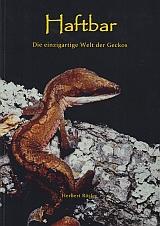



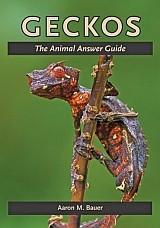

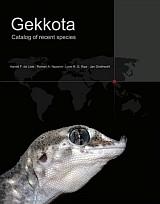

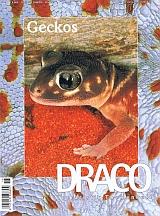

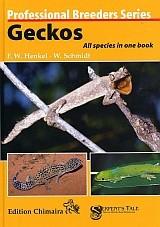

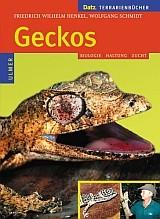

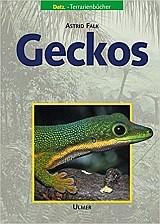



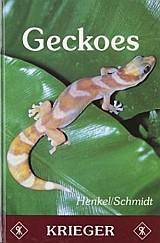



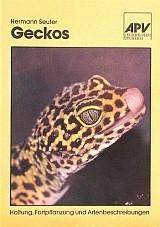

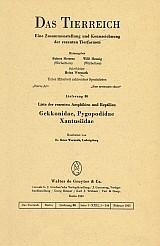











































































































































































|

